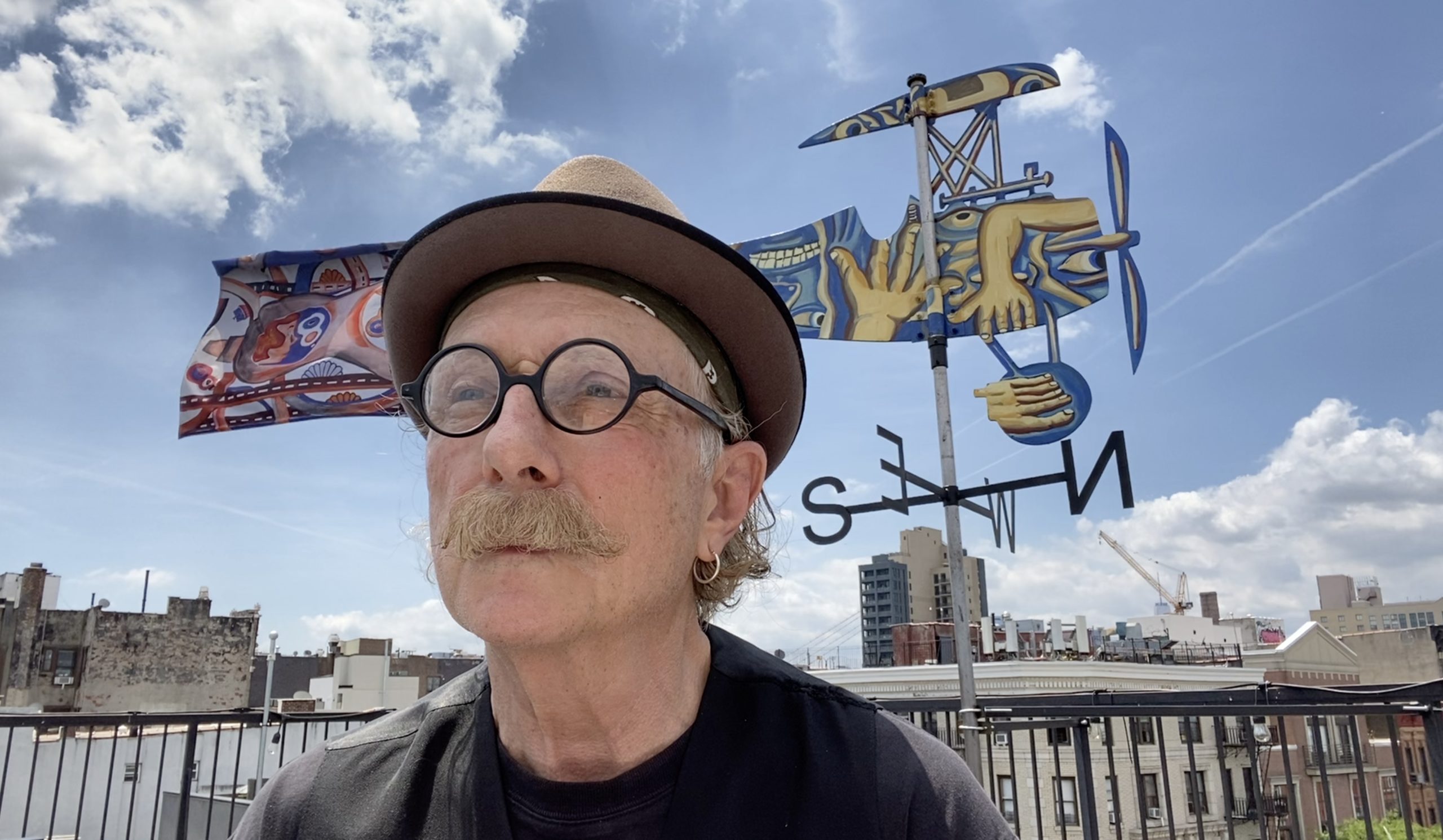This Brooklyn artist gives you a reason to look up
Garry Nichols can also track down ghosts

Artist Garry Nichols stands in front of his art — a flag, left, and a weathervane, right — which are on display in Williamsburg. The pieces are part of an ongoing rooftop series called Grand Flag, curated by artist James Esber. Photo courtesy of James Esber
It pays to look up while walking in Williamsburg.
Garry Nichols, a Tasmanian who paints in Brooklyn, is this month’s featured artist in a rooftop gallery near the corner of Grand Street and Bedford Avenue. If you stand across the street or down the block, you will see two colorful, moving pieces packed with imagery. One is in the form of a 6’ x 4’ flag, the other an oversized, working weathervane.
The exhibit is part of an ongoing series called Grand Flag, curated by artist James Esber. To date, 21 flags created by artists of note have been featured on the roof. Nichols is the first to have created both a flag and a weathervane.